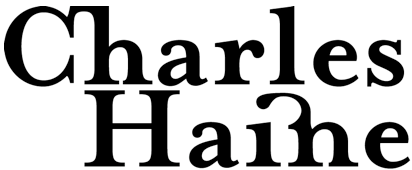Occupying the niche in the industry that I do (as a colorist not associated with a lab or telecine house), I grade mostly digitally captured images, and I have to admit that I was tremendously excited when the Alexa came onto the scene.
I’ve worked as a DP for more than a decade, and I’ve consistently loved Arri’s product. I also respected how they have handled the transition to digital, the care, research and planning that went into it. It was clear that Arri was taking digital capture seriously and wanted to come out with a project that made traditional cinematographers satisfied.
However, now that I’ve graded close to a dozen spots captured on the Alexa, I have to admit, it’s not the right tool for every job.
There are two main area’s where the RED still beats the Alexa, and that’s re-framing (cropping in from the 4k image) and RAW. Now, I know RAW capture is available for the Alexa, but right now I haven’t booked a grading job for Arri Raw, my clients prefer to capture LogC to ProRes.
First off, re-framing. Re-framing wasn’t a priority for most filmmakers until the RED; we had all started on film, where re-framing was pricy and lost resolution, or we worked on standard def video, where it was easy as chips but looked awful. So, even once we switched over to HD and digital finish for film jobs, re-framing just wasn’t a top priority on the list for most people. We had a habit of not re-framing, so people, by and large, didn’t very much.
Once the RED came along, that changed. Producer’s realized that you could get both your medium and close-up shots out of the same shot (if you shot 4K and finished 1080P), so the constant refrain was heard on set “remember, you can crop in post, so shoot loose and frame it later and keep moving.” I’m not kidding, folks really said that.
And you know what? Many people changed the way they shot. Framed a little wider than they would normally, to protect themselves, knowing they could always punch in later. Maybe they saved time on set by not shooting the ECU they wanted, knowing they could pull it from the CU. In the time crunch of production, and knowing that you could easily crop into RED 25-30% without much visible quality loss at 1080p, it was a smart, efficient decision.
One caveat; because of the Bayer sensor, you can’t actually crop in fully down to 50% image size without noticeable degradation in your image, which is an article for another time.
But now the horse is out of the barn, and director’s, producers and editors are used to that re-framing. To go back to a straight 1920x1080 format, that offers no room to re-frame is a very tough proposition now; it’s like putting toothpaste back in a tube.
For instance, on one of the spots I just graded shot on Alexa, the DP was pushing to do a close-up, but the producer pushed them to move on, which is a valid point for a producer to make; they have a budget to hit, and time is money on set. They didn’t shoot the close-up, the producer won the argument. In post, the director wanted his close-up, and the editor, used to RED footage, punched into the master. However, since it’s a punch in on 1920x1080 (not 4K), the punch-in is to my eye very noticeable and you see artifacting.
The other big drawback is that you can’t capture RAW. One of the spots I worked on was with a major DP given the time and support to work as he wanted to, who nailed every exposure perfectly and dialed in precisely the look he wanted in camera, including being on top of every menu setting. I did some massaging, some light vignetteing, a tiny amount of matching, but I don’t think I changed any shot more than 10%. Still worth bringing me in, that final 5-10% can really make a spot sing, but I didn’t have to do anything major. That’s where LogC excels.
I had another spot, run and gun (meaning not a lot of time to light, set exposure, etc.). Through no fault to the filmmakers, the footage needed more help. And to be honest, the Alexa, though it had a wide latitude, felt “thin” compared to grading from the RAW. For once scene, the kelvin balance was off, which left some color artifacts after correction and felt more like 5D than RED (where you just pull down the menu and set the kelvin that works). It was both surprising and frustrating to be back to grading that sort of footage after the luxury of grading RAW footage straight from the RED for so many projects.
For these two reasons, I think the Alexa makes the most sense for episodic television, docs and a certain kind of indie features, or any sort of project where you are likely to be shooting a tremendous volume of footage and are comfortable with it’s limitations, at least when working LogC ProRes. It simplified the post workflow tremendously, which is very useful when working on a tight deadline basis (no transcodes! Grade the ProRes without having to re-link to Raw!).
For a commercial or music video, where there is typically less footage shot and the ability to re-frame and go into detail with the grade are really valued, I think RED is still the smart move.Also,
for indie features where you won’t have as much time to light, I’d still push
to shoot RED to give the most room possible in post to smooth out the grade.
